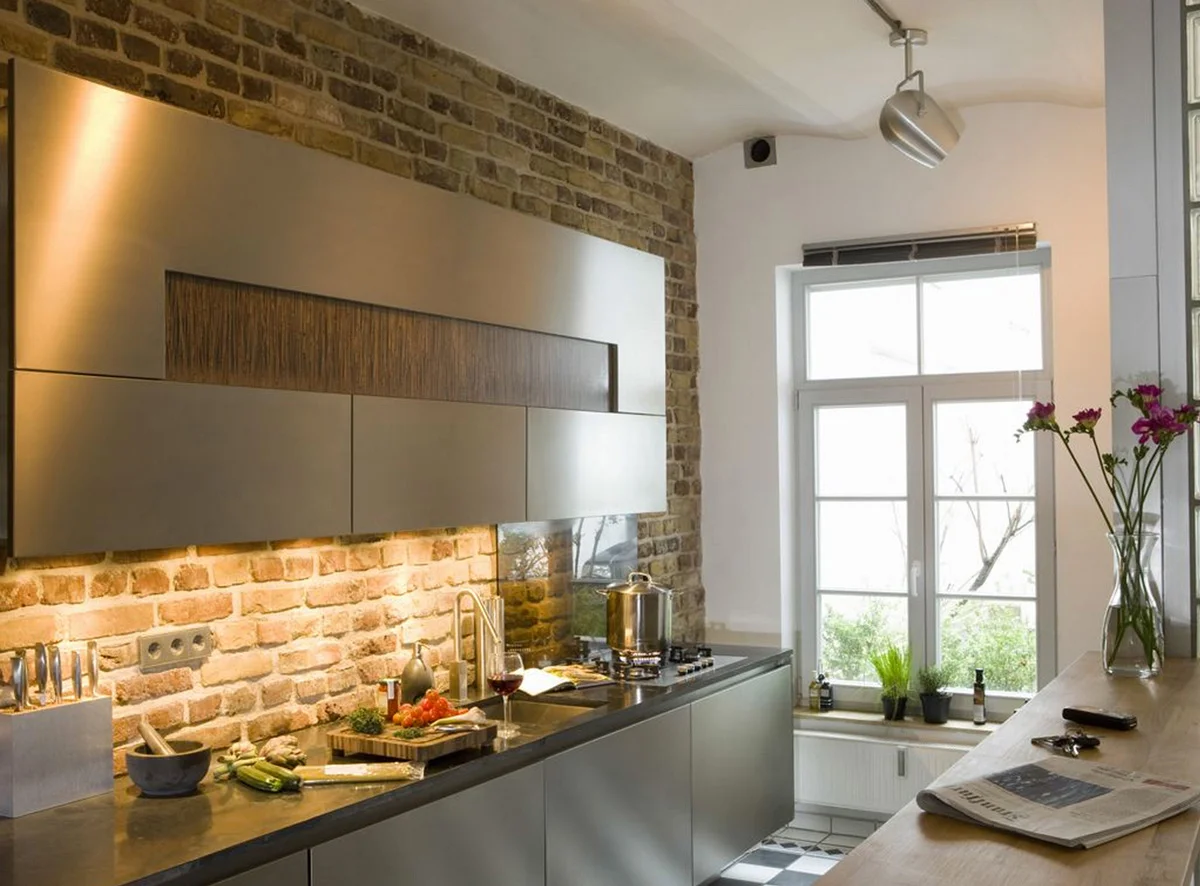How to Light Your Kitchen

The Kitchen is today's gathering place for friends and family.
At our house it seems always to be the place where everyone ends up while dinner is being prepared. No matter how many deep, cozy armchairs the living room has to offer, or how inviting the deck is on a warm summer evening, everyone is leaning against the kitchen counters, glass in hand, making my last minute food preparation a very familiar (and comfortable) dance.
It's just a fact: the kitchen is the heart of the home. It is also usually the busiest room of the house.
Today's multi-functional kitchen spaces are not only used for cooking, but also for visiting with friends, home work, reading the paper and just relaxing.
The kitchen asks for effective lighting at a fairly bright level for tasks as well as decorative lighting to create an inviting, livable space. Just like in any other living space it is important to create multiple layers of light in the kitchen. Task, ambient, accent and decorative lighting will together create the inviting atmosphere you want. Try to think about the general feel of your home and continue the color temperature from other areas of the house into the kitchen.
Recessed downlights can assure even illumination of the kitchen, but please, please don't ask them to do the job all by themselves! Lighting coming just from above creates a bland, hospital-waiting-room feel. You can do better than that!
Decorative pendant lights are ideal for lighting an island while adding your personal style to the decor. Depending on the size of the island, two or three pendant lights are usually sufficient. A dimmer switch allows for bright task lighting for food preparation or homework, while allowing the lights to be lowered for atmosphere. Please note: Pendant lights over the island should hang just above eye level when you are standing. (Rule of thumb: 30" above the counter. You can add to that for very large rooms with high ceilings.) This allows you to see your guests comfortably. Choose fixtures with decorative bulbs that are meant to show or with diffusers that soften the glare of a naked bulb.
Kitchen counters and other work areas need to be well lit and free of shadows. Under-cabinet lighting strips provide effective task lighting. If at all possible mount the lights at the front edge of the cabinet.
The lights should, however, be shielded so that you don't look into bright lights while sitting at the breakfast or dining table. Please note that there can be a huge difference between cheap LED strips or pucks and the quality brands. A friend of mine just proudly showed off her new kitchen with beautiful cabinetry, but once she turned on the in-cabinet puck lights, she had bought for $6.95 at a local hardware store the entire place took on a sickly hue. I'm all for saving energy, but not for the cheap shortcuts that don't do the job they promise to do.
Fluorescent lighting fixtures are suitable because they are efficient. They do not put out much heat and they create an even light, and with the newer electronic ballasts, they do not flicker or hum anymore. Yes, they have a bad rep, but I think it is in many cases unjustified. Of course they are now being pushed aside by LED fixtures. LED undercabinet lights are very popular now and will probably own the scene in a few years and it's easy to see why: Super slim in profile LED strips or puck lights can virtually disappear while providing plenty of light for a kitchen counter.
The sink needs good lighting. It is after all one of the most used area in the kitchen. Recessed downlights or pendants work well if there are no overhead cabinets for undercabinet lighting. The built-in lighting in the range hood should accommodate at least a 60W bulb. A breakfast area is also frequently used for reading, so good overhead light is a must. Here the decor determines the style: from chandeliers to high-tech flexible track lighting with colorful pendants the choice is yours. As with dining tables, the light over the breakfast table should also hang approximately 30? above the table so you can see under it when seated and it yet hangs low enough to embrace the area with a warm, inviting glow. If your kitchen and dining area are within the same open area it is important to have the kitchen lights on a dimmer, so you can focus the eyes on the beautiful dining table and away from the pots and pans used to prepare the dinner.
In a contemporary kitchen, a low voltage monorail with a variety of track heads and colorful glass mini-pendants can run through the work and dining areas without interruption of design. The spots can highlight decorative features in the kitchen like a collection of colorful canisters on top of the cabinets. At the same time they provide general, ambient light. Good general lighting is needed for all casual activities. It permits comfortable clean-up and easy view into drawers. Recessed downlights are a good choice.
An important little point to pay attention to is the use of low voltage pendants in a kitchen that is REALLY used for cooking. Cooking grease and low voltage connections don't mix well. With a downdraft range without a hood I found out the hard way! But moving the fixture just a few feet away from the cooktop took care of the problem.
















